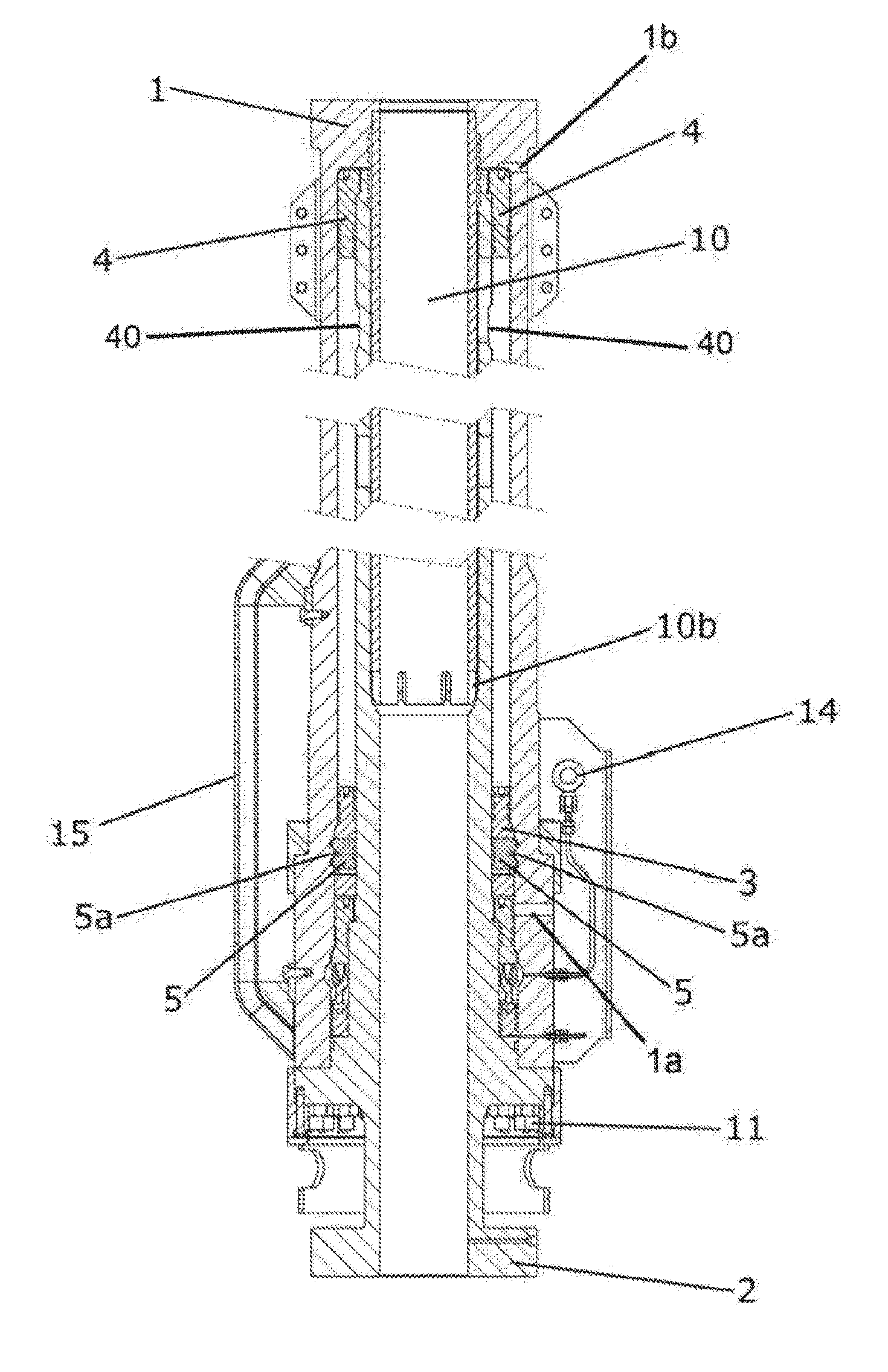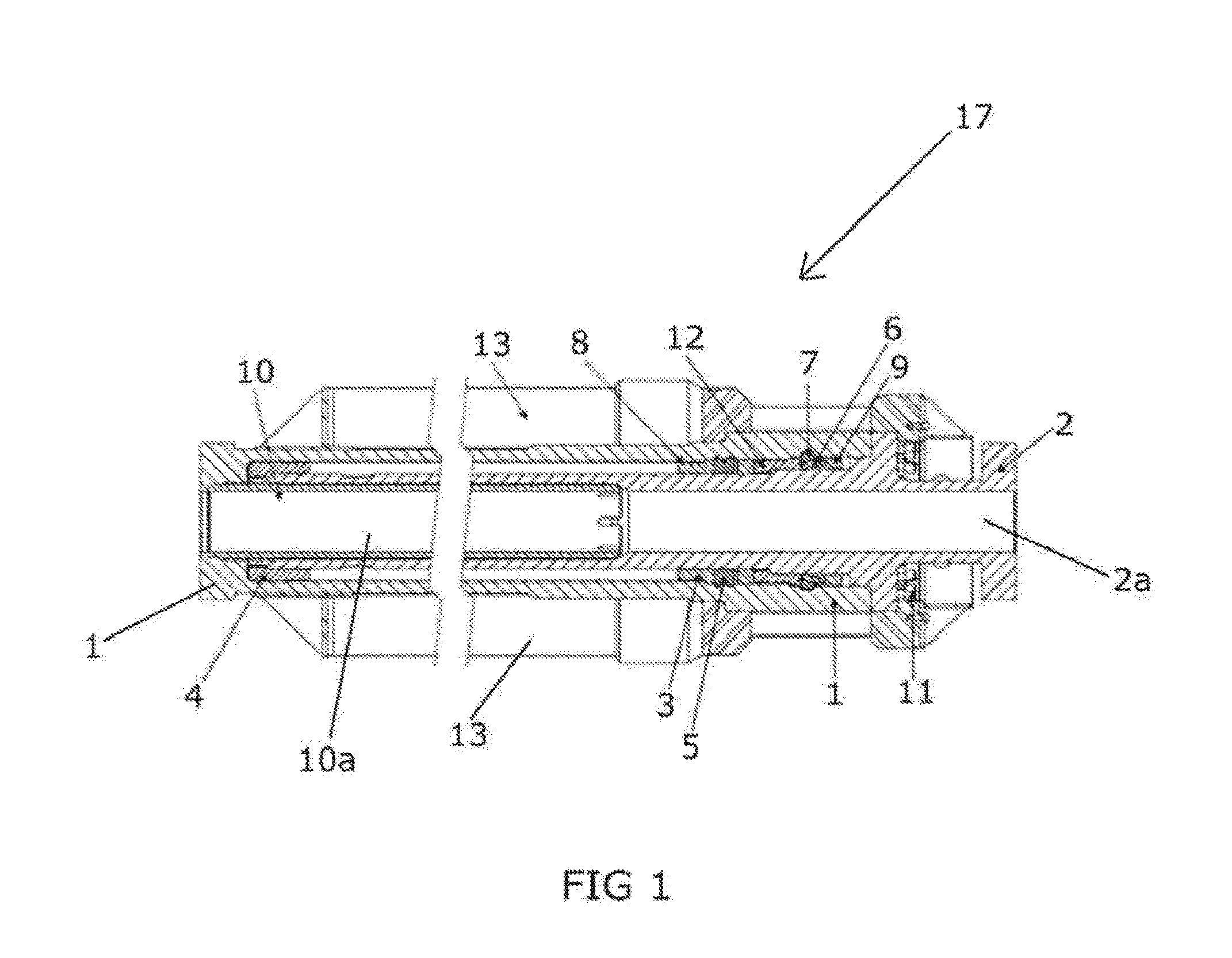Weak link for a riser system
a safety joint and riser technology, applied in the direction of sealing/packing, drilling pipes, wellbore/well accessories, etc., can solve the problems of subsea system damage risk, riser system tension or compression application, and failure mode known as ‘compensator lock up’, so as to reduce the risk of accidentality or substantially eliminate the risk of accidental application, the effect of selectively increasing the gripping for
- Summary
- Abstract
- Description
- Claims
- Application Information
AI Technical Summary
Benefits of technology
Problems solved by technology
Method used
Image
Examples
Embodiment Construction
[0073]The following paragraphs describe two preferred embodiments of the present invention which are purely exemplary for the sake of understanding the invention and non-limiting.
[0074]In all the figures from 1 to 6a 6b, 6c, 6d and 6e, all of which describe one preferred embodiment, like reference numerals represent like features. This is true for FIGS. 7 to 9, 10a, 10b, 11a and 11b, which describe another embodiment. Further, when in the following it is referred to as “top”, “bottom”, “upward”, “downward”, “above” or “below” and similar terms, this is strictly referring to an orientation with reference to the sea bed, where the sea bed is substantially horizontal and below the riser.
[0075]It should also be understood that the orientation of the various components may be otherwise than shown in the drawings, without deviating from the principle of the invention.
[0076]It is also clarified that the drawings only show the components of the weak link in detail and not the riser system o...
PUM
 Login to View More
Login to View More Abstract
Description
Claims
Application Information
 Login to View More
Login to View More - R&D
- Intellectual Property
- Life Sciences
- Materials
- Tech Scout
- Unparalleled Data Quality
- Higher Quality Content
- 60% Fewer Hallucinations
Browse by: Latest US Patents, China's latest patents, Technical Efficacy Thesaurus, Application Domain, Technology Topic, Popular Technical Reports.
© 2025 PatSnap. All rights reserved.Legal|Privacy policy|Modern Slavery Act Transparency Statement|Sitemap|About US| Contact US: help@patsnap.com



